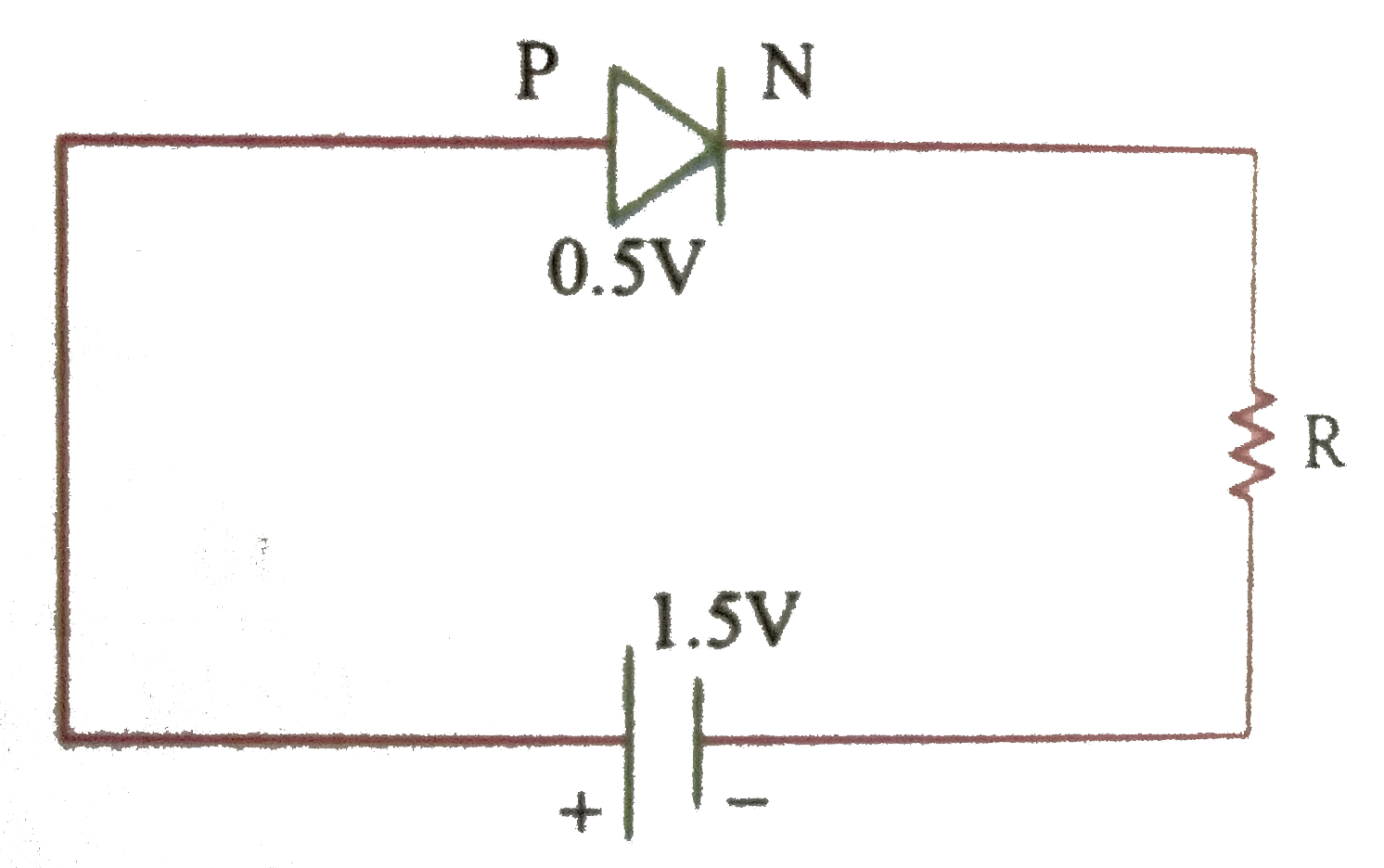A P−N junction diode can withstand currents up to 10mA. Under forward bias, The diode has a potential drop of 0.5V across it which is assumed to be independent of current. The maximum voltage of the battery used to forward bias the diode when a resistance of 200Ω is connected in series with it is
The correct Answer is:2.5V
Step by step video, text & image solution for A P-N junction diode can withstand currents up to 10 mA. Under forward bias, The diode has a potential drop of 0.5 V across it which is assumed to be independent of current. The maximum voltage of the battery used to forward bias the diode when a resistance of 200 Omega is connected in series with it is by Physics experts to help you in doubts & scoring excellent marks in Class 12 exams.
Updated on:21/07/2023Similar Questions
A p−n junction diode when forward biased has a drop of 0.5V which is assumed to be independent of current. The current in excess of 10mA through the diode produces a large Joule heating which damages (burns) the diode. If we want to use a 1.5V battery to forward bias the diode, what should be the vlaue of resistor used in series with the diode so that the maximum current does not exceed 5mA?
View SolutionConsider a p-n junction diode which produces a large heating effect when the current in the diode exceeds 16 mA and damages the diode. When the diode is in forward biased, the potential drop, which is assumed to be independent of the current is 0.3V. A resistor of resistance RΩ is used in series withthe forward biased diode along with a 5V battery. If the maximum current does not exceed 12 mA then R10=?
View Solution
Knowledge Check
A p-n junction diode when forward biased has a drop of 0.4 V which is assumed to be independent of current. A current excess of 10 mA through the diode damages (burns ) the diode. If we want to use a 2 V battery to forward bias the diode, what should be the value of resistor used in series with the diode so that the maximum current does not exceed 5 mA?
A130ΩB260ΩC390ΩD320ΩIn forward bias, the width of potential barrier in a P−N junction diode
ARemains constantBDecreasesCIncreasesDFirst (1) then(2)In forward bias, the width of potential barrier in a P−N junction diode
AIncreasedBDecreasedCRemains constantDFirst increases and then decreases
A p-n junction diode is designed to withstand current without damage up to 5 Ma across the combination. What is the maximum voltage of the battery that can forward bias the diode safely given that the diode has a constant potential drop of 0.5 V when forward biased
View SolutionA p-n jucntion when forward biased has a drop of 0.7 V which is assumed to be independent of current. The current in excess of 10 Ma through the diode produces a large joule heating effect which burns the diode. If we want to use 1.6 V battery to forward ibas the diode, the value of resistor used in series with the diode so that the maximum current does not exceed 6 mA should be
View SolutionA PN junction diode when forward biased has a drop of 0.5V which is assumed to be independent of current. The current in excess of 10mA through the diode produces large joule heating which damages the diode. If we diode, the resistor used in series with the diode so that the maximum current does not exceed 5mA is.
 .
.
View SolutionA p-n junction diode is said to be forward biased when a potential difference applied across p and n region makes
View SolutionA p-n junction diode when forward baiased has a drop of 0.5 V which is assumed to be independent of current. The current in excess of 10 mA through the diode produces a large joule heating which damages (burns) the diode. If we want to use a 15.V battery to forward bias diode a resistor of resistance a×102Ω is to be used in serise with the diode so that the maximum current does not exceed 5mA. what is the value of a?
View Solution
